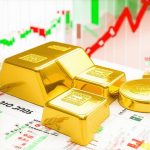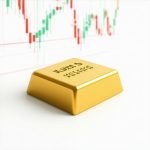Understanding the Gold Market: A Comprehensive Overview
The gold market has long been a cornerstone of investment strategies, known for its resilience and ability to preserve wealth during economic turmoil. As an investor, staying informed about the trends influencing gold prices is crucial for maximizing returns and minimizing risks. In this analysis, we will delve into the key trends and factors shaping the gold market today, helping you make informed investment decisions.
Current Economic Climate and Gold Prices
In recent years, global economic uncertainty has driven many investors towards safe-haven assets like gold. Factors such as inflation, geopolitical tensions, and fluctuating currencies can significantly impact gold prices. For instance, during economic downturns, gold often experiences a surge in demand as investors seek to safeguard their capital. Understanding these dynamics is essential for recognizing when to enter or exit the gold market.
Technological Advancements in Gold Trading
Advancements in technology have transformed the way investors engage with the gold market. Online trading platforms and mobile applications have made it easier than ever for individuals to buy and sell gold. Furthermore, the rise of gold ETFs (Exchange-Traded Funds) has allowed investors to gain exposure to gold without needing to own the physical asset. For more information on choosing the right gold ETF, check out our beginner’s guide.
Impact of Central Bank Policies on Gold Demand
Central banks play a significant role in the gold market by buying and selling gold reserves to manage their monetary policies. Recent trends indicate that many central banks are increasing their gold holdings as a hedge against inflation and currency devaluation. This growing demand from central banks can drive prices higher, making it crucial for investors to stay updated on these policy changes. To dive deeper, explore our article on how central bank gold purchases drive market trends.
Gold Market Predictions for 2025
Looking ahead, analysts are making predictions about the gold market’s trajectory through 2025. Factors such as global economic recovery, changes in interest rates, and ongoing geopolitical tensions will continue to influence gold prices. For investors, understanding these predictions is vital for aligning their investment strategies with anticipated market movements. Our post on 2025 gold price predictions provides valuable insights into what to expect in the coming years.
Conclusion
As we navigate the complexities of the gold market, staying informed about key trends and factors is essential for any investor. From the impact of central bank policies to technological advancements in trading, understanding these elements will empower you to make better investment decisions. In the following sections, we will explore additional insights and strategies to help you further navigate the gold market.
Understanding Gold Investment Strategies for 2025
As we look towards 2025, it’s essential for investors to grasp the various gold investment strategies that can yield favorable returns. With the gold market continuously evolving, staying abreast of different investment types such as gold coins, bullion, and ETFs is crucial. Each investment vehicle comes with its unique advantages and risks, and understanding these can help in tailoring a portfolio that aligns with your financial goals. For a comprehensive introduction to various gold investment types, check out our top 5 gold investment types for 2025.
The Role of Gold ETFs in Modern Investing
Gold ETFs have surged in popularity due to their liquidity and ease of trading. Unlike physical gold, which requires storage and security, ETFs offer a convenient way to gain exposure to gold prices without the hassle of physical ownership. This shift towards ETFs reflects broader trends in investing, where efficiency and accessibility are paramount. If you’re considering entering the gold market through ETFs, our guide on exploring gold ETFs can provide you with valuable insights.
Market Influences: Geopolitical Events and Economic Indicators
Geopolitical events continue to be a significant influence on gold prices. Situations like trade disputes, political instability, and changes in government policies can lead to fluctuations in demand for gold as a safe-haven asset. Additionally, economic indicators such as inflation rates, unemployment figures, and GDP growth play a pivotal role in shaping investor sentiment. Understanding these factors allows investors to anticipate potential price movements. For a deeper dive into how these elements affect your investments, read our article on gold demand trends.
Physical Gold vs. Digital Gold: A Comparative Analysis
With the rise of digital gold platforms, investors now have the option to buy gold online, which has made gold investment more accessible. However, the debate between physical gold and digital gold continues. Physical gold offers tangible value, while digital gold provides flexibility and ease of transaction. Weighing the pros and cons of each is crucial for making informed investment choices. For those interested in physical gold, our post on storing physical gold: best practices for investors offers essential tips.
Long-Term Benefits of Gold Investment
Investing in gold is often viewed as a long-term strategy for wealth preservation. Its historical performance during economic downturns demonstrates its value as a hedge against inflation and currency devaluation. For investors seeking stability amidst market volatility, gold can provide a sense of security and peace of mind. To explore the long-term benefits further, read our article on the long-term benefits of investing in gold.
The Future of Gold: Trends to Watch
As we move closer to 2025, several trends are emerging within the gold market. Analysts predict that demand for gold will continue to grow, particularly from emerging markets. Additionally, technological advancements in mining and trading could reshape the landscape of gold investment. Staying informed about these developments will be key for investors looking to adapt their strategies. For insights on future market dynamics, consider our article on gold market analysis: what’s next for prices in 2025.
Understanding Gold Demand Trends: A Key for Investors
As we move towards 2025, recognizing the demand trends for gold is essential for any investor. Factors such as consumer behavior, industrial usage, and investment trends contribute significantly to the fluctuations in gold prices. For example, emerging markets are increasingly investing in gold as a hedge against local currency devaluation. This shift underscores the importance of staying updated on regional demand dynamics. To learn more about how these factors affect your investments, read our article on gold demand trends and their implications.
Gold as a Hedge Against Inflation: Analyzing the Benefits
Gold has historically served as a hedge against inflation, making it a popular choice for investors seeking stability. In times of rising prices, the value of gold often increases, preserving purchasing power. Understanding how inflation impacts gold can help investors make timely decisions regarding their portfolios. For a deeper exploration of this topic, check out our discussion on gold as a hedge against inflation.
Evaluating Gold Mining Stocks: Risks and Opportunities
Investing in gold mining stocks presents unique risks and opportunities. While they can offer higher returns compared to physical gold, they also come with operational risks linked to the mining process. Evaluating mining stocks requires understanding market conditions, production costs, and geopolitical factors. For insights on this investment avenue, explore our comprehensive guide on evaluating gold mining stocks.
Emerging Technologies in Gold Trading: The Future of Investment
The landscape of gold trading is evolving rapidly, driven by technological advancements. Innovations such as blockchain technology and artificial intelligence are enhancing transparency and efficiency in gold transactions. These developments are making gold investments more accessible and appealing to a wider audience. To understand how these technologies are reshaping the gold market, delve into our analysis of current gold market trends.
Strategies for Navigating Volatile Gold Markets
Investors often face challenges during periods of volatility in the gold market. Developing effective strategies is crucial for mitigating risks and maximizing returns. Techniques such as dollar-cost averaging and diversifying your gold investments can help in managing market fluctuations. For a detailed guide on successful trading techniques, refer to our post on essential gold trading techniques.
The Intersection of Gold and Global Economic Factors
The performance of gold is closely tied to global economic indicators. Factors such as interest rates, currency strength, and economic growth rates play a pivotal role in determining gold prices. Understanding how these economic elements interact with gold can offer valuable insights for strategic investment planning. To explore how these factors influence your investments, check out our article on gold versus stocks analysis.
Gold Investment Strategies: Adapting to Market Changes
As the gold market continues to evolve, investors must adapt their strategies to stay ahead of trends and maximize returns. With various investment options available—from physical gold to gold ETFs—understanding the nuances of each can significantly impact your investment portfolio. In this section, we will explore the diverse gold investment strategies that are crucial for investors in 2025.
Physical Gold vs. Gold ETFs: Making the Right Choice
Deciding between investing in physical gold and gold ETFs is a critical choice for many investors. Physical gold, such as coins and bars, provides tangible value and can serve as a hedge against economic instability. However, it requires secure storage and insurance, which can add costs. On the other hand, gold ETFs offer a more liquid and convenient way to invest without the need for physical storage. For a deeper understanding of these options, consider our beginner’s guide to gold ETFs.
Exploring Gold Mutual Funds: A Diversified Approach
Gold mutual funds represent another avenue for investors looking to diversify their portfolios. These funds typically invest in a mix of gold mining stocks and physical gold, providing a balanced exposure to the gold market. This can be an excellent option for those who prefer a managed investment approach. To learn more about how gold mutual funds can fit into your financial strategy, check our post on gold mutual funds.
The Impact of Global Economic Trends on Gold Investments
Global economic trends heavily influence gold prices and, consequently, investment strategies. Factors such as inflation rates, currency fluctuations, and geopolitical tensions can cause significant price volatility. Understanding these global dynamics is essential for making informed decisions. For insights on how economic factors shape gold demand, explore our article on gold demand trends.
Developing a Long-Term Investment Mindset
Investing in gold should be approached with a long-term mindset. While short-term price fluctuations can be unsettling, history shows that gold often retains its value over time. Adopting a long-term perspective allows investors to ride out market volatility and capitalize on gold’s potential for appreciation. To understand the long-term benefits of gold investment, read our article on the long-term benefits of investing in gold.
Practical Tips for Successful Gold Trading
Successful gold trading involves understanding market trends and developing effective strategies. Techniques such as dollar-cost averaging can help mitigate risks associated with market volatility. Additionally, keeping abreast of global economic indicators and aligning your investments with these trends is crucial. For practical tips on enhancing your trading skills, refer to our guide on gold trading techniques.
Conclusion: Staying Informed and Flexible in Gold Investments
In conclusion, navigating the gold investment landscape requires a blend of knowledge, strategy, and adaptability. By understanding the various investment options available, staying informed about global economic factors, and developing a long-term mindset, investors can position themselves for success in the gold market. As we approach 2025, remaining flexible in your investment strategy will be key to capitalizing on opportunities in this ever-changing environment.
Frequently Asked Questions About Gold Investment
What factors influence gold prices?
Gold prices are influenced by a variety of factors including inflation rates, interest rates, geopolitical tensions, and currency fluctuations. During times of economic uncertainty, demand for gold typically increases as it is considered a safe-haven asset.
Is investing in gold a good hedge against inflation?
Yes, gold has historically served as an effective hedge against inflation. As inflation rises, the purchasing power of currency decreases, often leading to an increase in gold prices as investors seek to protect their wealth.
What are the best ways to invest in gold?
The best ways to invest in gold include purchasing physical gold (coins, bars), investing in gold ETFs, buying shares in gold mining companies, and exploring gold mutual funds. Each option has its own set of benefits and risks, making it essential to assess your investment goals.
How can I store physical gold securely?
When storing physical gold, consider using a safe deposit box at a bank, investing in a home safe, or utilizing a professional storage service. It’s important to ensure that your gold is stored securely to prevent theft or loss.
Are gold mining stocks a good investment?
Gold mining stocks can be a lucrative investment as they offer the potential for higher returns compared to physical gold. However, they also carry operational risks related to mining operations and fluctuating gold prices. Investors should conduct thorough research before investing.
What are the tax implications of investing in gold?
Tax implications for gold investments vary by country. In many jurisdictions, physical gold is treated as a collectible and may be subject to higher capital gains tax rates. It’s important to consult a tax professional to understand the tax rules applicable to your gold investments.
How does geopolitical instability affect gold prices?
Geopolitical instability often leads to increased demand for gold as a safe-haven asset. Events such as wars, trade disputes, and political upheaval can drive investors to seek the relative safety of gold, causing prices to rise.
Can I invest in gold through my retirement account?
Yes, many retirement accounts, such as IRAs, allow for investment in gold. However, there are specific rules and regulations regarding the types of gold that can be held in these accounts, so it’s important to consult with a financial advisor.
What trends should investors watch in the gold market for 2025?
Investors should watch for trends such as increasing demand from emerging markets, technological advancements in gold trading, and changes in central bank policies. These factors can significantly influence gold prices and investment strategies.
How can I stay informed about gold market trends?
Staying informed about gold market trends involves following trusted financial news sources, subscribing to industry reports, and engaging with expert analyses. Websites like GoldSilver and Kitco provide valuable insights and updates on the gold market.
Authority Resources for Gold Investment
For investors looking to deepen their understanding of the gold market, the following resources are highly recommended:
- GoldSilver.com – A comprehensive resource for gold investing, including market insights and analysis.
- Kitco.com – Offers live gold prices, market news, and expert commentary.
- Investopedia – Provides educational articles and guides on gold investment strategies and market trends.
- World Gold Council – An authoritative source for gold market statistics and insights.
- CNBC Gold News – For up-to-the-minute news and analysis on gold prices and market trends.
Conclusion: Embracing the Gold Market with Confidence
As we approach 2025, navigating the gold market requires a strategic understanding of investment options, market trends, and economic indicators. By exploring various gold investment strategies and staying informed through trusted resources, investors can position themselves for success in this dynamic market. Remember, whether you’re considering physical gold, gold ETFs, or mining stocks, each option comes with unique benefits and risks. Embrace the opportunities within the gold market with confidence and insight, ensuring your investment decisions align with your financial goals.









